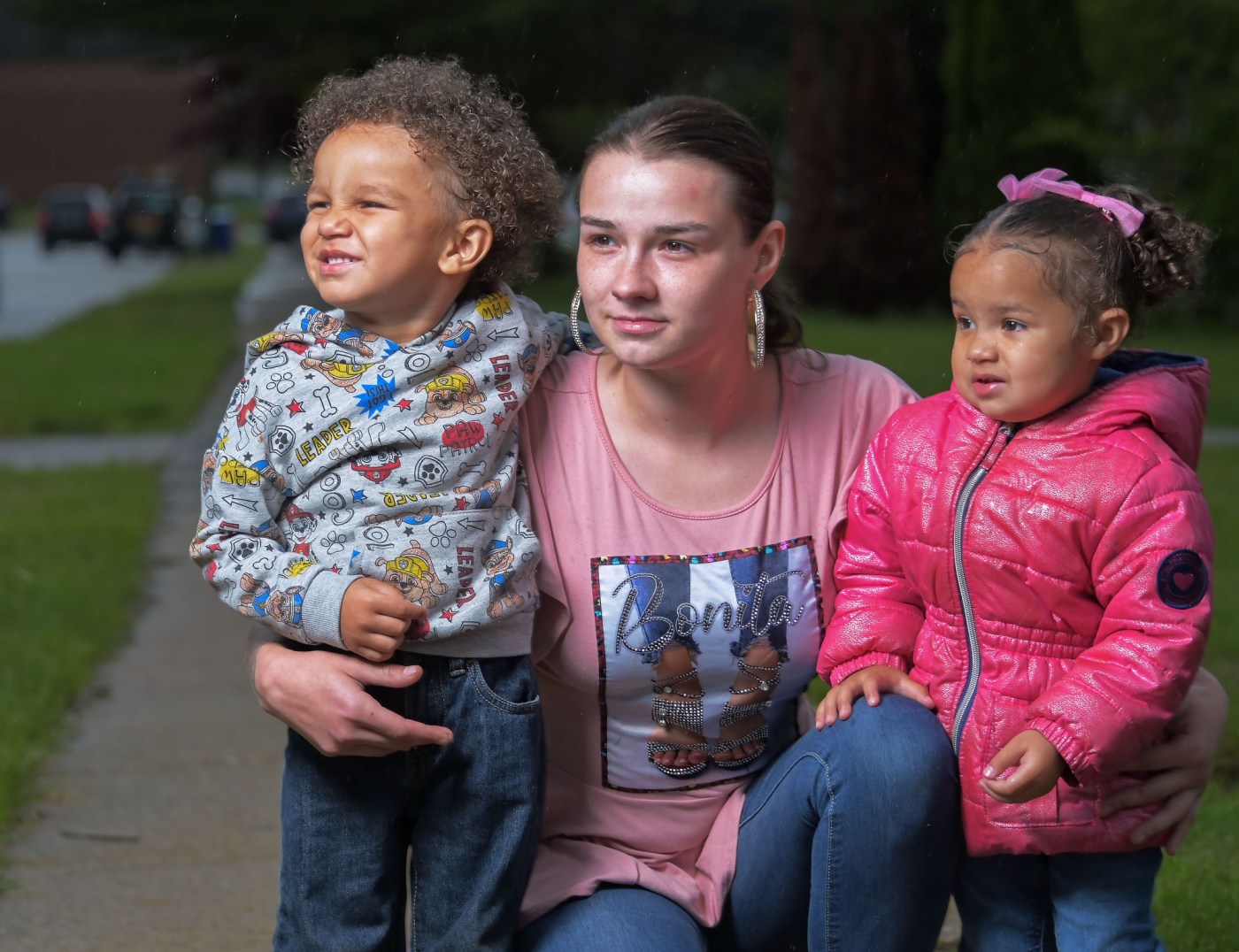The money allowed one mother in California to say “yes” instead of her usual “no” when her child asked for ice cream. In New York, it gave a minimum-wage worker the freedom to quit and focus on nursing school.
For others, it covered the unexpected car repair or sudden medical expense that instead might have cascaded into losing a job or falling behind on the rent.
Across the country, an experiment has been underway to answer the question: Can a regular, no-strings-attached infusion of cash help alleviate, if not poverty itself, then some of its grinding effects?
Baltimore is among dozens of cities that have launched a program known as guaranteed or basic income, a direct handout, usually of $500 or $1,000 a month via a reloadable debit card, to a select group of residents, while researchers study how they spend it and the effect it has on the quality of their lives.
Spearheaded by Mayor Brandon Scott, Baltimore’s pilot, funded with $4.8 million from the city’s share of federal American Rescue Plan Act money, paid 200 parents $1,000 a month for a two-year period that ended last month. Preliminary results show that participants’ income, housing independence and mental health all improved in the program’s first year.
The number of participants who reported applying to a college or trade school increased from 16% to 27% during the first year, according to a study produced by Mayors for a Guaranteed Income, a group of mayors advocating for such programs. The percentage of recipients renting as opposed to living with friends or family jumped from 52% to 67% over the same span.
The concept of a guaranteed income has gained more interest and support in recent years but also some backlash, with supporters saying recipients use the money on necessities like food and rent, and opponents decrying it as yet another government handout for the poor.
“It used to be the case that I would frequently be asked, ‘Aren’t they going to spend it on drugs and alcohol? Aren’t they going to work less?’” said Stacia West, a founding director of the Center for Guaranteed Income Research at the University of Pennsylvania.
With a growing body of research that disabuses the notion that the guaranteed income encourages frivolous spending or laziness, West said she is more likely to be queried on how a guaranteed income program can be implemented.
The money can provide a cushion for those who live on the finance edge and comes without the kind of regulations and limitations of more conventional public assistance like food stamps or housing vouchers, researchers say.
What the guaranteed money buys in many cases was time, West said.
“When you’re very low-income, that translates into time scarcity,” West said. “You’re spending all this time navigating these systems — child care, transportation. Guaranteed income unlocks some time for you.”
Some used the time for job training that led to better work, researchers have found across the country, or to spend more time with children, leading to improved school performance.
Related Articles
How the Paris Olympics spun ratings gold for NBC and Peacock
Democrats launch first paid ad campaign for the Harris-Walz ticket in battleground states
Kamala Harris is pushing joy. Donald Trump paints a darker picture. Will mismatched moods matter?
Dozens of pregnant women, some bleeding or in labor, being turned away from ERs despite federal law
The US government wants to make it easier for you to click the ‘unsubscribe’ button
In Baltimore’s pilot, preliminary results showed participants’ labor force participation increased from 64% to 71%, though their unemployment rate remained more than twice that of average Baltimore residents.
With many of the programs still fairly new, it remains to be seen how long their positive effects on recipients last, researchers said. Many of the pilot plans including Baltimore’s used federal pandemic relief funds that are expiring, leaving them without a readily available source of support.
West said guaranteed income is “an imprecise tool” and can’t by itself fix the underlying causes of systemic poverty, such as the legacy of “racial redlining and neighborhood segregation” that Scott has pointed to in making his case for the program.
“What is very clear is the history of redlining isn’t going to be solved by guaranteed income,” West said.
Particularly in red states, there are those with “a potent ideological objection” to giving free money to the poor, said Matthew Reed, executive director of the Harkin Institute for Public Policy and Citizen Engagement in Iowa.
This spring, the institute was about halfway through a two-year pilot program that gives $500 a month to 110 people in the Des Moines area when the Iowa Legislature banned the use of public funds in such programs.
About half of the Iowa program’s $2.5 million costs come from public sources, including municipalities in its three-county area, so those funds are being spent first, saving private money for after the new law takes effect next year, Reed said.
“It was certainly frustrating,” Reed said.
Rather than waiting until the project’s conclusion to have “a more honest debate” about its merits, Reed said, legislators opted to say, “We don’t care what the results are. We don’t like it.”
Legislators split largely on partisan lines. One Republican lawmaker called it “socialism on steroids,” while Democrats argued that local governments should be allowed to use their funds as they saw fit.
Iowa State Sen. Scott Webster, a Republican, who shepherded the bill through his chamber, called guaranteed income “a terrible waste of taxpayer money.” He disputed research that supports the program’s benefits, saying it doesn’t adequately track how recipients spend the money on the debit card as well as other funds at their disposal.
“Let’s say they use $500 [of program money] on groceries. What happened to the money they used to use for groceries. Where’d that go?” Webster said.
Such sentiments reflect an unfair distrust and scrutiny of poor people, said Abigail Marquez, who oversaw the guaranteed income program in Los Angeles.
The city’s pilot was the nation’s largest, a $38 million effort that served more than 3,000 residents.
“Based on the results from the research, we learned that people were able to seek and obtain dignified work,” said Marquez, who manages the city’s Community Investment for Families Department.
Another important outcome was the time freed up for recipients to spend with children and neighbors, and on their own health and well-being.
“We saw that participants were able to leave a violent home environment because of the guaranteed income,” she said.
The concept has found a friendly home in deeply blue California, which has multiple programs designed to help groups that include immigrants and those exiting foster care. Legislatures in other states have, like Iowa, blocked them, although two Democratic governors, in Arizona and Wisconsin, have vetoed the measures.
The Texas Attorney General sued Harris County, which includes Houston, saying its guaranteed income program violated the state constitution’s ban against giving public money to an individual. The state’s Supreme Court has temporarily blocked the program, and county officials are considering adjustments to try getting around that.
To turn guaranteed income pilots into more permanent parts of the social safety net will require funding, of course, but also political will, supporters said.
“If it’s a public program, it needs political support,” Reed said. “To do it at a larger scale, it’s going to require public money and public buy-in.”
The first mayor-led guaranteed income pilot similar to Baltimore’s launched in 2019 in Stockton, California. Other cities followed, and researchers have found across the board that recipients use the money in ways that make sense for their families, spending it on rent, utilities and food, said Suki Samra, who directed the Stockton program and now is executive director of the mayors’ group advocating for guaranteed income.
Participants are consistently more likely to find long-term employment, she said, and to get some form of education when compared to a control group.
“When you remove that constant drumbeat of anxiety, of worry, folks are able to take a step back, they’re able to dream,” Samra said. “They’re able to think about what their full potential is.”
Although Baltimore stopped distributing benefits at the end of July, the study of its recipients continues. Researchers are expected to release next year a final study of the program, which will include data on recipients collected up to six months after the close of the program.
Then what? Scott is among those who would like to see the concept implemented on a more comprehensive, national basis.
When the city’s preliminary results were rolled out in June, Scott directly addressed federal lawmakers.
“This should be a national thing,” he said in a news conference. “It can be and should be and it will be — I’m going to speak it into existence — part of the solution to end poverty for good in this country.”
Samra said the mayors’ group believes an expansion of the child tax credit to include cash payments to parents would be a natural progression.
“We’re seeing that as the most politically feasible tool,” she said.
West said people have grown increasingly comfortable with the idea of a guaranteed income. Andrew Yang made it part of his run for the Democratic nomination for president in 2020. And during the coronavirus pandemic, the federal government sent stimulus money to more than 150 million households.
“We all received a guaranteed income then,” she said.
She envisions cities continuing to serve as “incubators of invention,” experimenting with how to build on guaranteed income pilots and work towards a goal that should be beyond politics.
“Poverty alleviation,” West said, “should be nonpartisan.”












